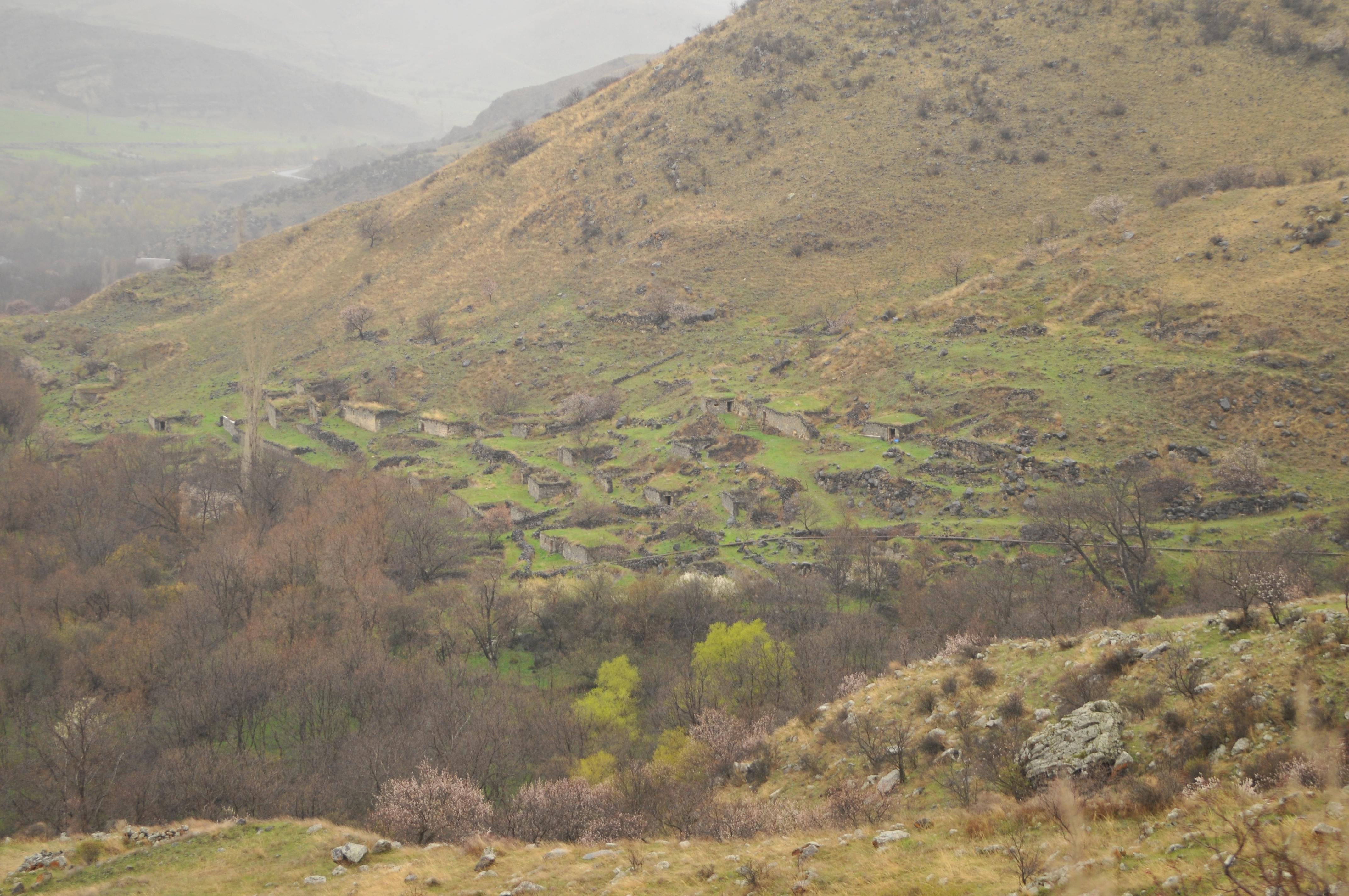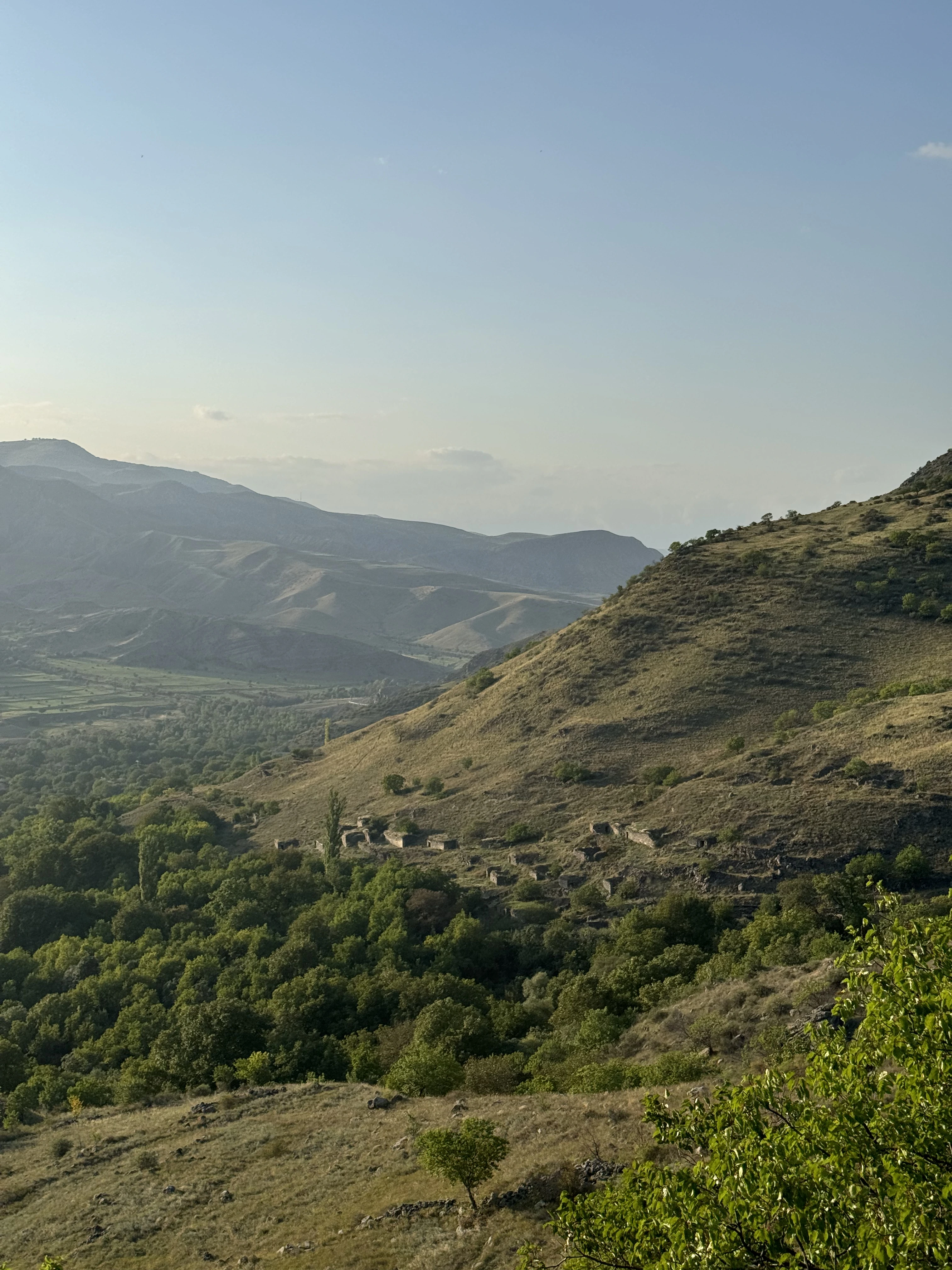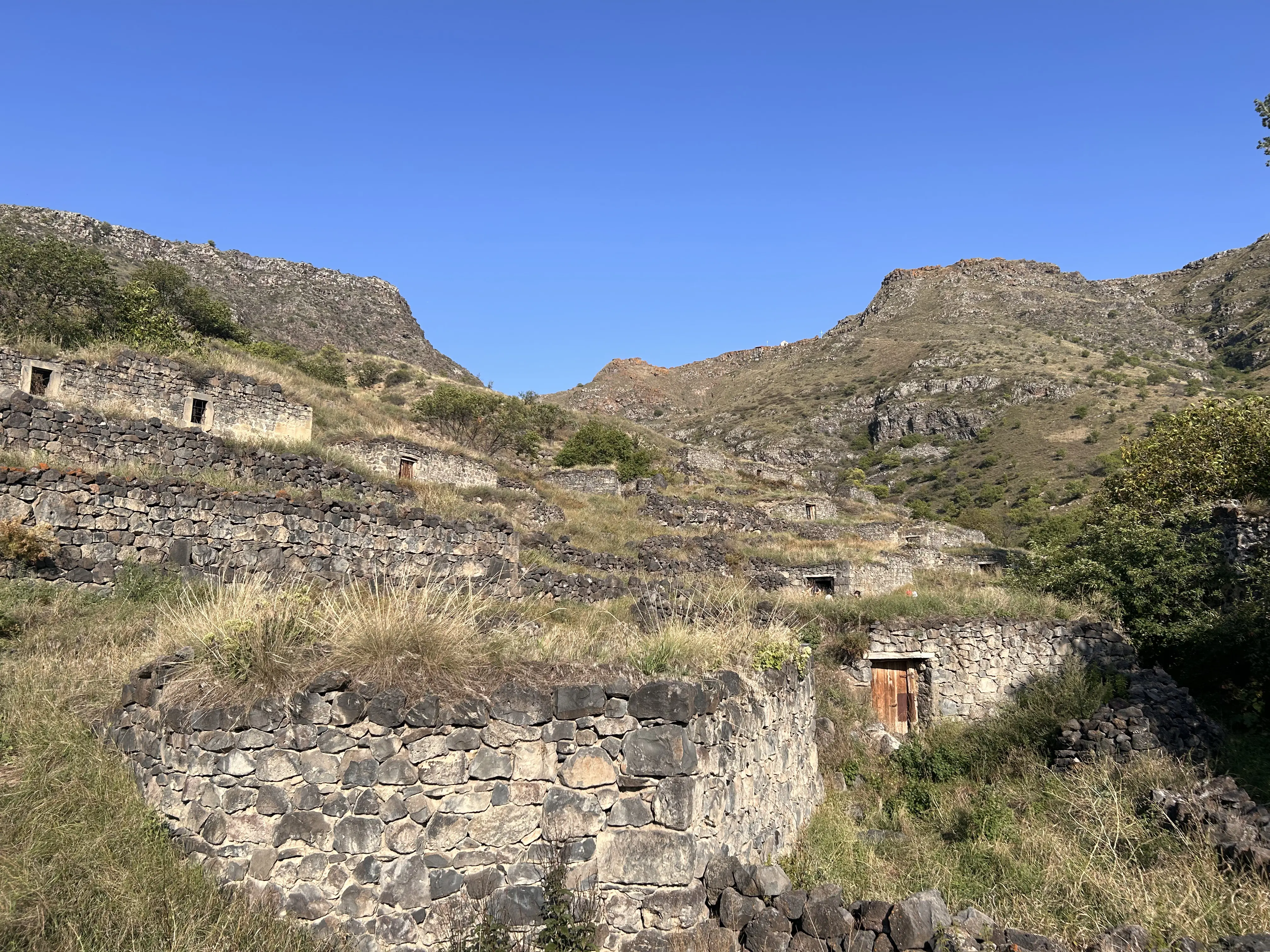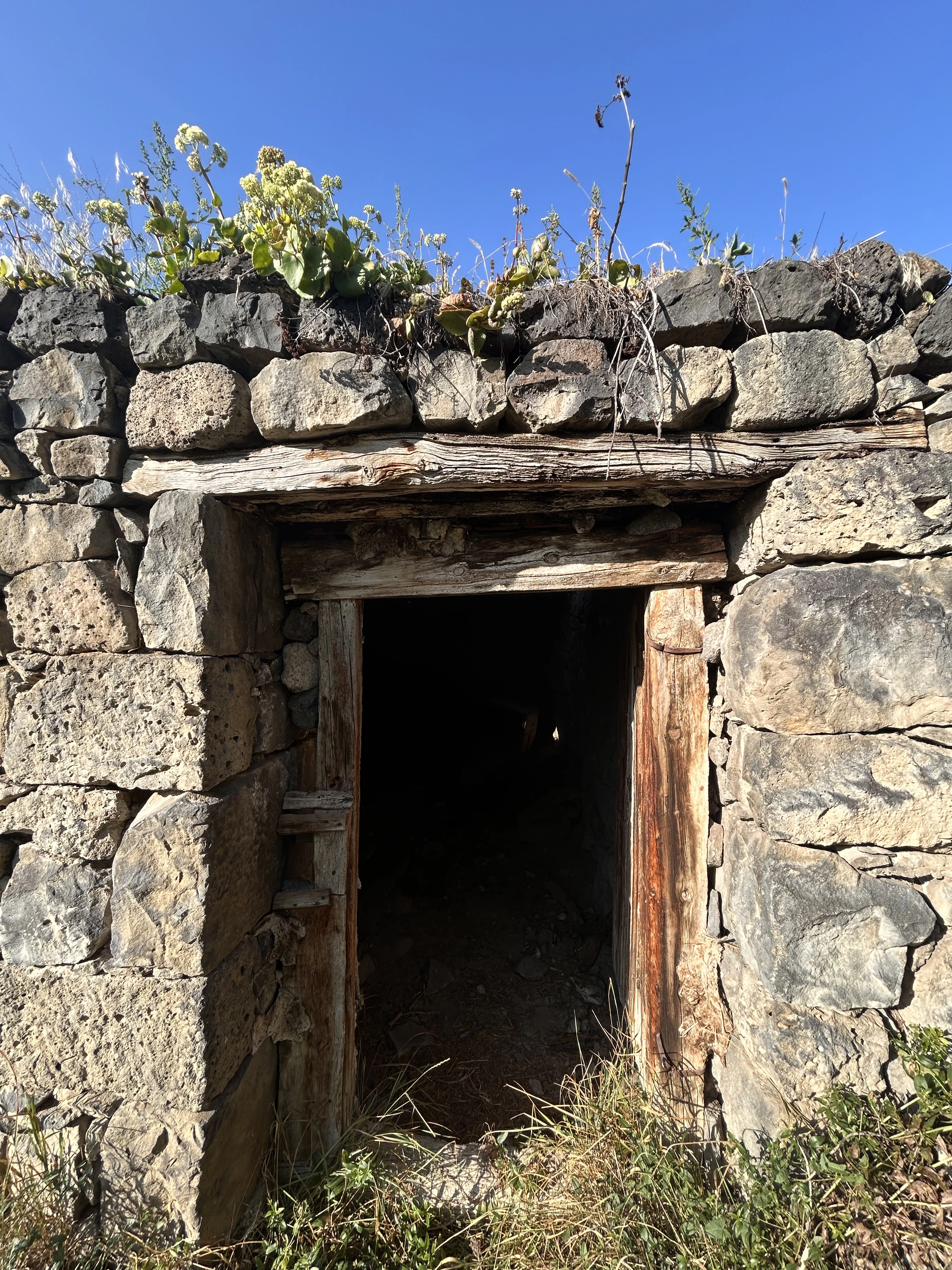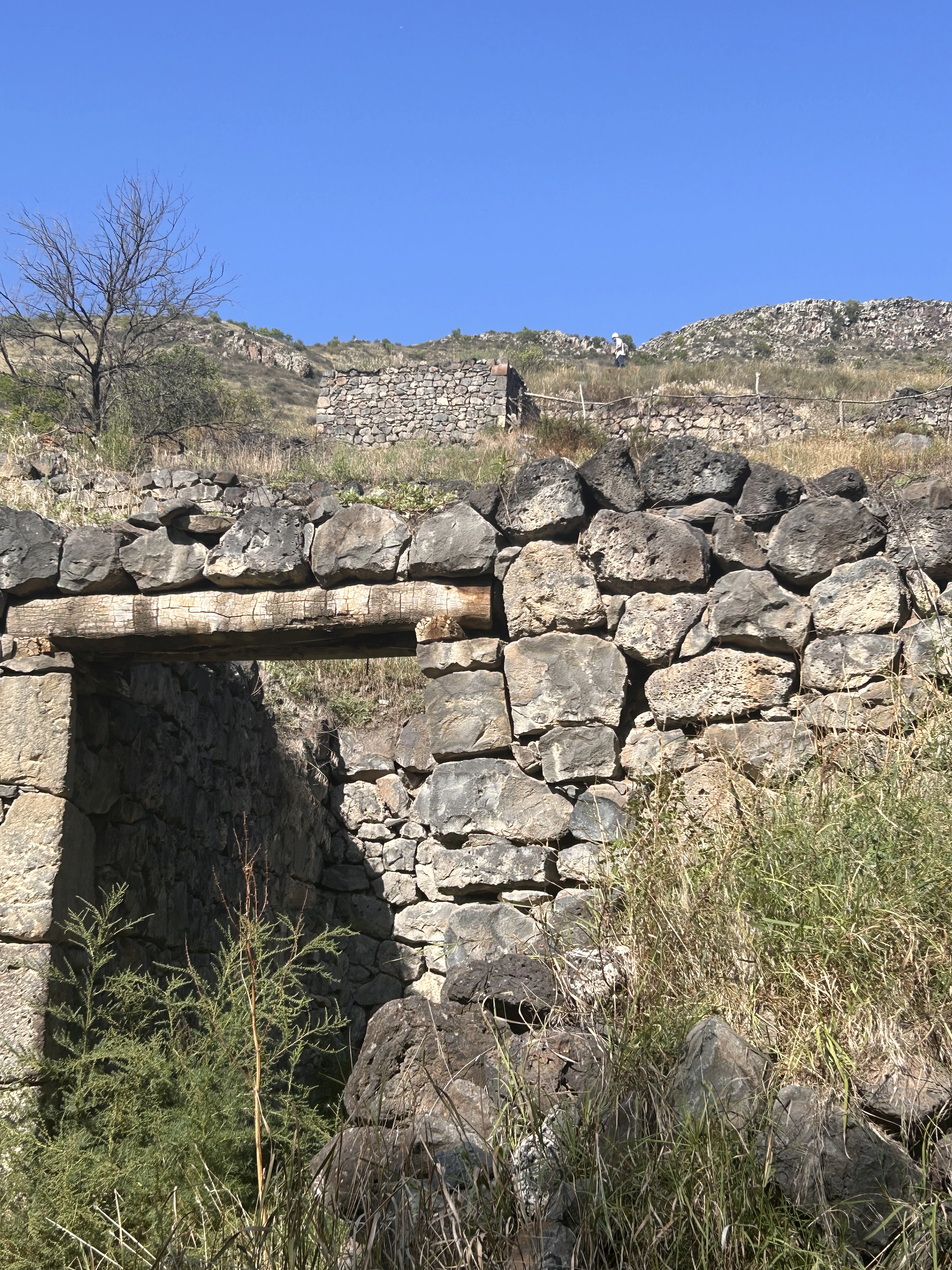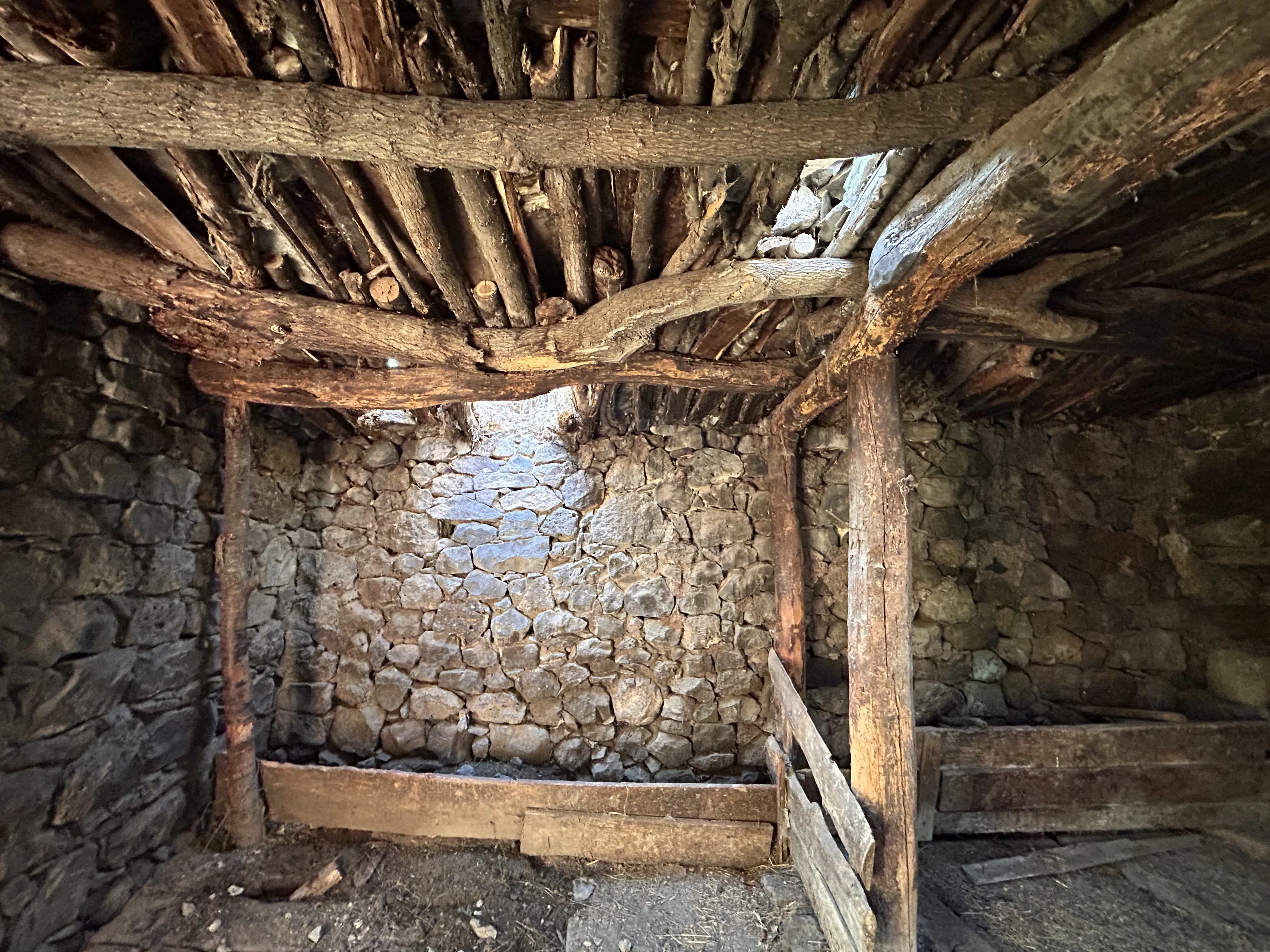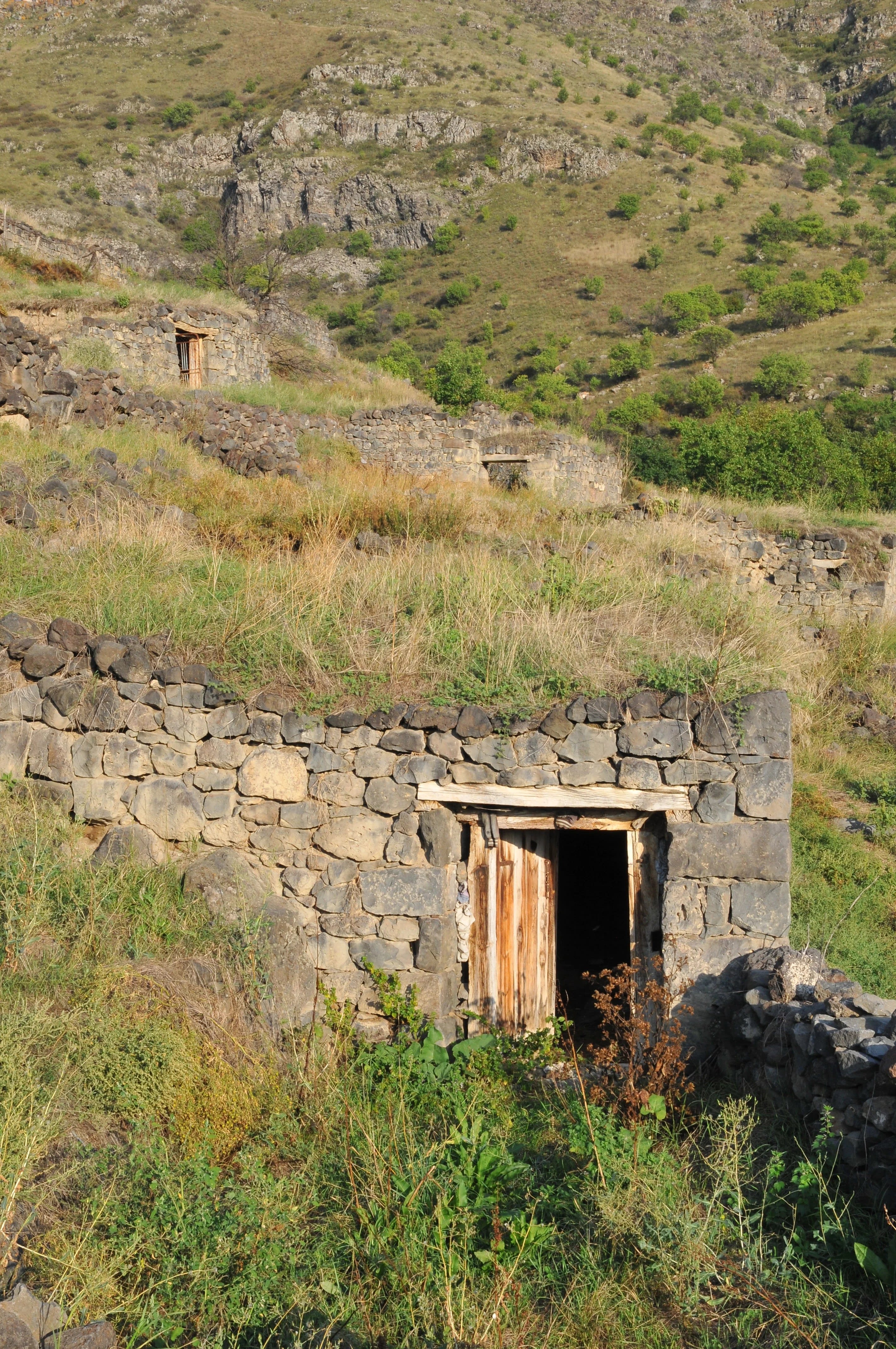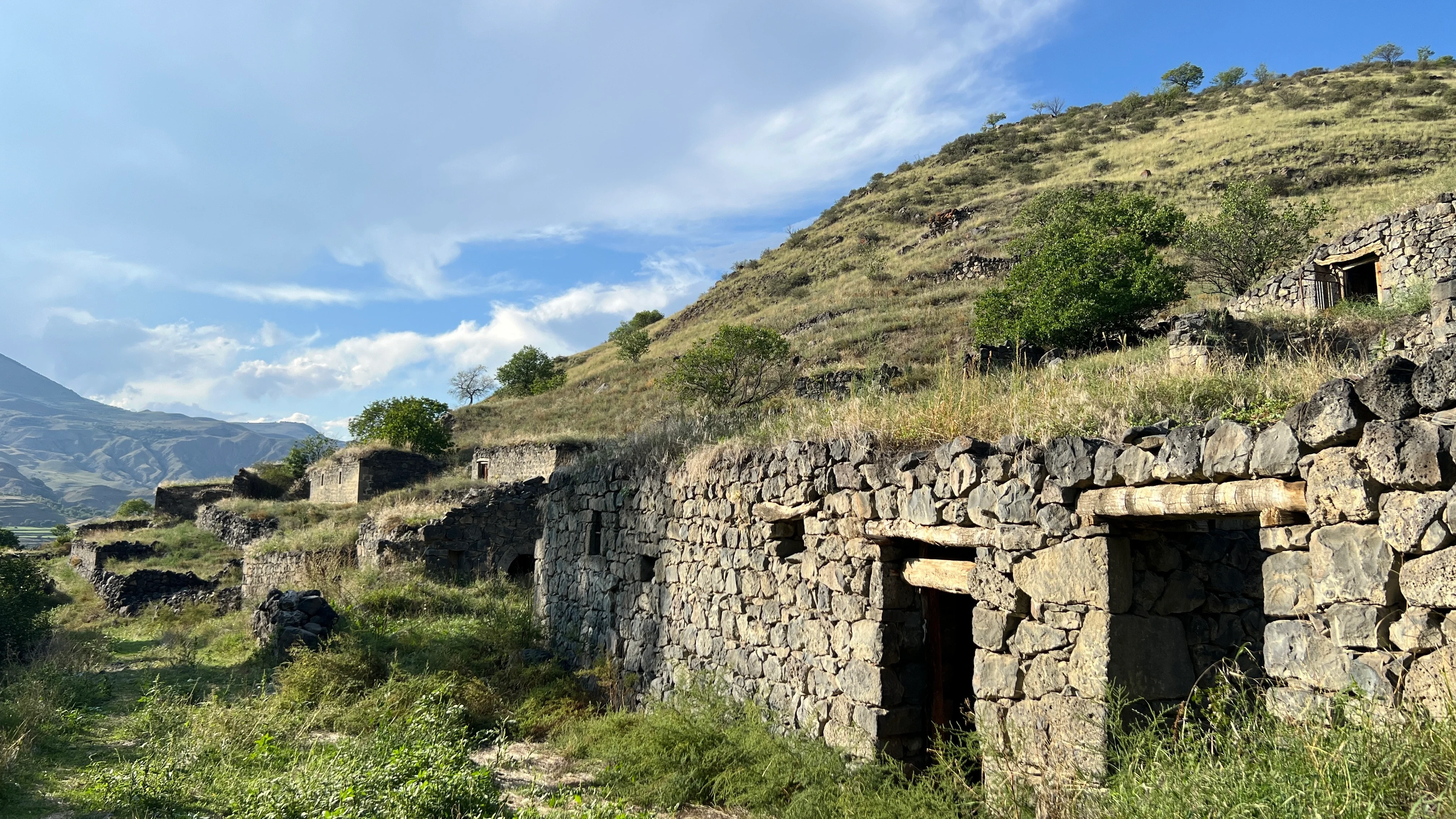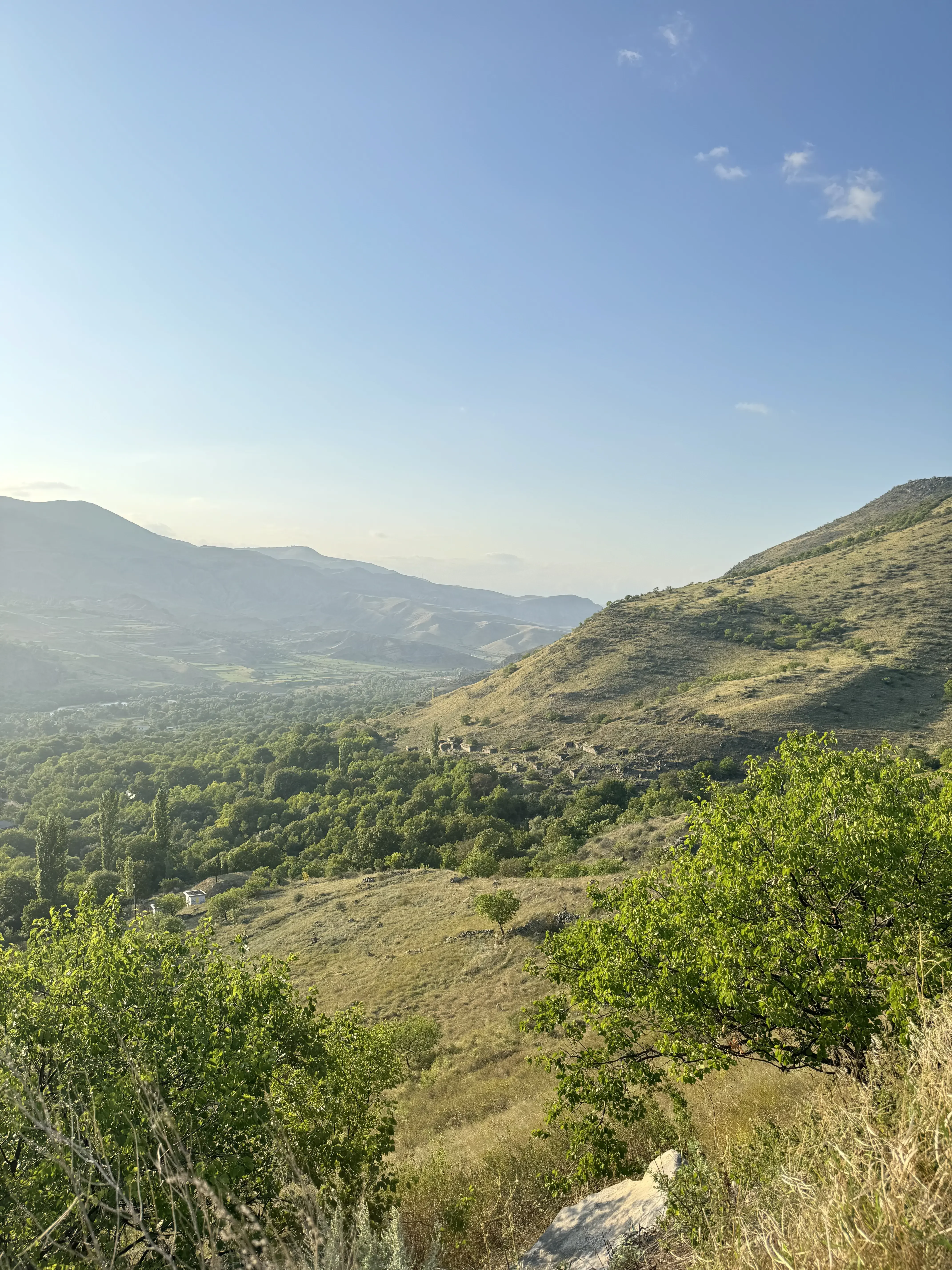Entering the forest while eating cornel and local plums that accompany one along the Chobaretiskhevi River, one steps over terraces that seem to take you back in time. Looking around, the precisely arranged terraces, shaded with mulberry trees, capture one's attention. The migrated mulberry trees have turned into local vines ripened under the southern sun.
The terraces follow the river, where shattered rocks from a medieval mosque create a wild staircase from the riverbank to the upland. The ruined mosque, as an artifact, marks a threshold point in Nijgori's historical timeline, bridging the post-Ottoman and pre-Ottoman eras. Mulberry trees growing from the mosque challenge one to find any entrance. All the openings are filled with stones, except for a half-meter arch left open. Here, one is at the center of time, surrounded by the ambivalent sounds of Christian and Islamic prayers, accompanied by the calls of hoopoes, the gurgling river, and the rustling nettles.
Sudden mooing brings one back to reality. The cows are returning to their shelters, which are spread out across the terraces up to the cliff. These shelters, marked with the initials of their former owners, now serve as cow sheds but were once cellars for Meskhetian vines. Designed for seasonal use, the shelters are built with coarse materials and reliable construction to withstand harsh winters and save time during building.
As one moves from cellar to cellar, the path continues to the uplands, leading to the cliff and the upper village. From the eastern peak, the village shows its pride even with its ruined fortress. The journey continues to Saro village, the next checkpoint for hikers, following the trails of local ancestors, trodden many times with heavy hands, hearts, and heads.
